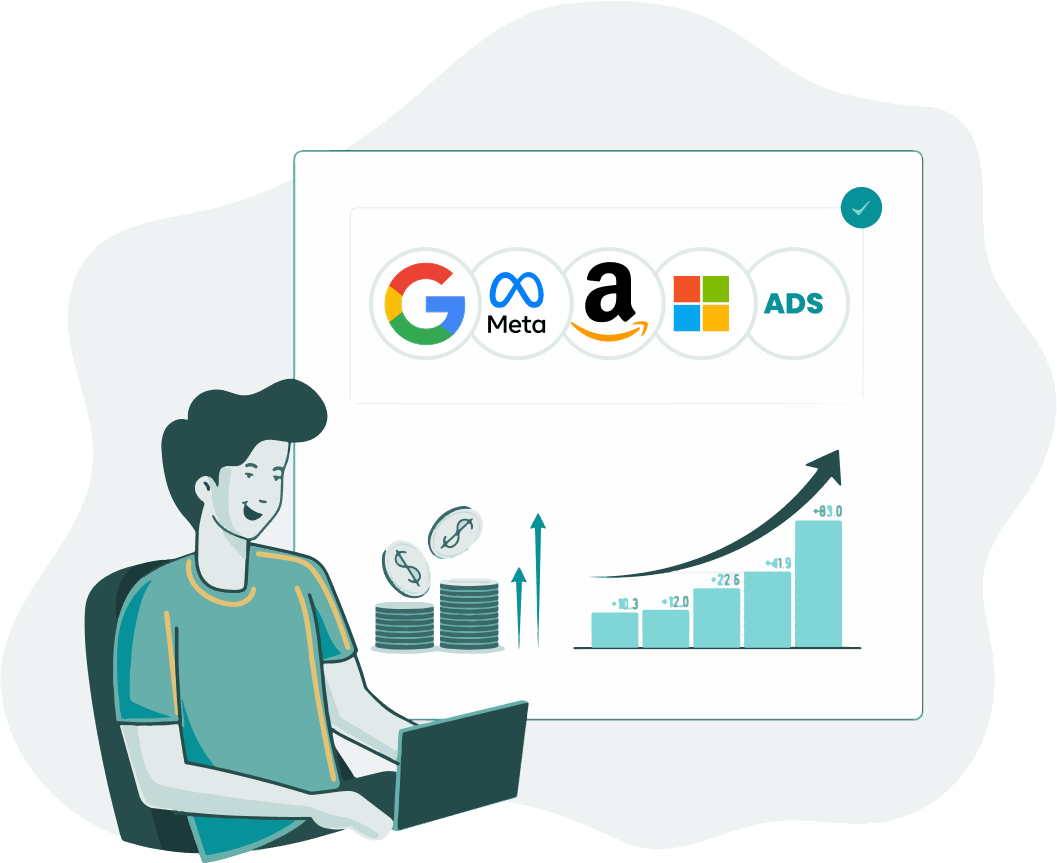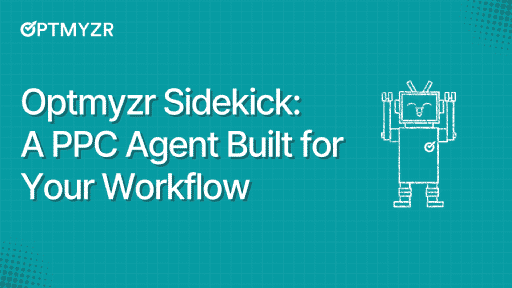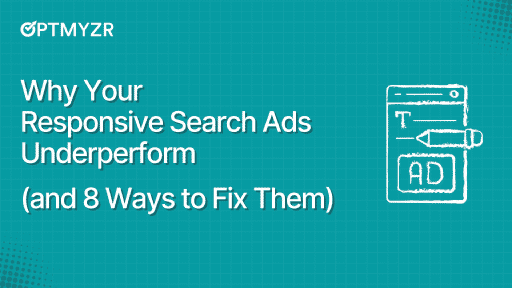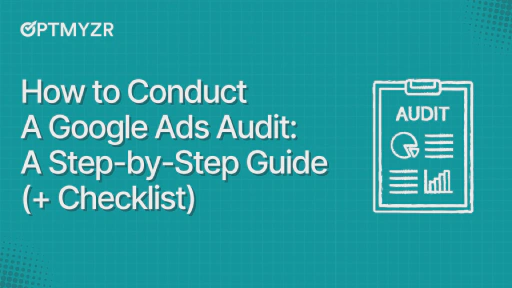If you’re new to search marketing and Google Ads and feel like a lost child in a busy market trying to figure out how the platform or even campaign setup works, you’re exactly where I was when I launched my first campaign.
Back then, I had no idea what terms like PPC or search marketing even meant. It wasn’t until I became a content and product marketer at Optmyzr that I had to dive in, learn the ropes, and start writing about the industry and our tools.
But there was one problem. I couldn’t truly understand what advertisers go through without ever having run an ad myself. So I set up my first campaign… and realized there was a whole other layer of learning I’d missed. Even with AI-driven bidding and Performance Max simplifying some things, there are still plenty of details that can trip you up if you’re not prepared.
This article is my attempt to help PPC newbies feel a little less lost as they set up their first Google Ads campaign.
7 things to do before setting up your first campaign
Here is a quick checklist of things you need to keep in mind when setting up your first Google Ads campaign.
1. Know your audience
Before you even begin to create your Google Ads account and create ads, you need to understand your market and audience.
I know this sounds cliché, but there are three important things in the process of understanding your audience:
1. Dig into market needs and audience behavior
Businesses don’t run in isolation or independently from their audiences, and if you wish to run successful ads, you need to identify your target audience’s pain points. You need to really pay attention to the needs of prospective customers and the market problem.
Advertisers often use tools like GA4 reports, CRM data, and search intent insights to define key audience signals.
If you’re an Optmyzr customer, you have access to two tools to help you with this:
- Keyword Lasso to uncover high-performing search terms that aren’t yet in your account, showing you how real people are already searching
- Search Term N-Grams breaks down search queries to reveal the most impactful words or phrases, helping you spot patterns in audience behavior that you might otherwise miss.
2. Connect your product to real customer demand
Once you understand your audience, define how your product or service fills the gap. Why would someone choose your brand over competitors? What makes your offer stand out?
These answers should shape your ad messaging, targeting, and even your landing page strategy. For example, if you’re a local bakery that delivers gluten-free treats faster than national brands, highlight that speed and specialty in your copy, and test variations to see what drives conversions.
3. Build your ad copy around your product’s real value
Your ad messaging should align with the needs of your audience and your business goals. Start by identifying what you want to achieve—whether that’s more sign-ups, sales, or brand awareness, and build your messaging to support that outcome.
To make sure your messaging resonates, focus on the value your product delivers. What problem are you solving? How does your offer make life easier, better, or more efficient for your audience?
Optmyzr’s Ad Text Optimization tool helps break down which headlines and descriptions are actually performing and where you can improve. And with AB Testing for Ads, you can compare ad variations to see which messages drive clicks and conversions. These insights ensure your creative is clear and effective.
2. Learn the basics of Google Ads.
Going in without any knowledge of Google Ads, and terms like Campaigns, Ad Groups, Keywords, Bids, and Budgets might make your experience of creating your first campaign quite overwhelming.
Before getting into setting up your campaigns and ads, you need to know what the different ad types are and when to use them. The next step is to understand what a campaign structure is and how to create winning campaign structures. We’ll see why account and campaign structures are important in the following section.
What campaign types are available?
Google Ads offers a variety of campaign types:
- Search (text ads on search results)
- Display (visual banner ads across websites)
- Video (YouTube ads)
- Shopping (product-based ads)
- Performance Max (automated, all-in-one campaigns using AI)
Each serves a different goal, so choose based on what you’re trying to achieve—brand visibility, direct conversions, or a mix.
How campaign structure affects performance
A well-structured campaign helps Google understand your goals and serve your ads more efficiently. Campaigns are broken down into ad groups, which contain keywords and ads. Think of it like organizing a store: the clearer your aisles and shelves, the easier it is for shoppers (and algorithms) to find what they need.
💡Pro Tip: Even if you start with Smart Campaigns or Performance Max, understanding the underlying structure (like assets, audience signals, and feed inputs) can give you a serious edge. It helps you diagnose what’s working and what needs adjusting, faster. |
And if you’re entirely new to PPC and need more basic-level courses to get you started, Google Skillshop has some great resources. These were some of the first courses I took before writing about Google Ads and setting up a campaign of my own.
You can also follow our video podcasts, PPC Town Hall to level up your PPC game.
3. Organize your account for clarity and control
Even after you understand product-market fit and get the basics of Google Ads right, the Google Ads interface might look a little tricky to navigate. A sorted account structure makes this task a little easier.
Categorizing your ads gives you more control over when and where your ads appear, and when they are triggered. Think of it like a well-organized cabinet where everything has its place, and you always know where to find what you need.
The three most important things in account structure are:
1. Naming
Many marketers who start out to create campaigns and ads, including myself, come up with campaign names out of the blue; I named my first campaign “CA without a goal guidance” because I didn’t know any better. While random naming might make sense as we start creating campaigns, managing the account as we keep adding campaigns becomes chaotic.
If you do not have a consistent and clear naming process, it becomes difficult to go in and look for specific campaigns and ad groups in the future.
Having a proper naming convention in place allows for better control, organization, and data filtering. Moreover, if there’s a new addition to your team and they need to find their way around the account, it helps to have a clear naming convention.
2. Know your account split
Having a clear account split and keeping different campaign types separate makes it easier to track your progress and identify winning strategies. You can segment your campaigns based on bidding strategies, keyword types, languages, budget, and more.
Splitting campaigns by geography, audience intent, or budget control helps you tailor messaging, allocate spend more efficiently, and evaluate what’s working in specific contexts. For example, a high-intent audience might respond better to aggressive bidding, while a broader awareness campaign may need different creatives or budget pacing.
There’s no one best way to split your campaigns. Whether you separate campaigns by location, funnel stage, or product category depends on your business model and performance goals. The key is to choose a structure that makes optimization easier, not harder.
3. Flexibility to go in and change
Remember, your account structure is not set in stone. You can always go in and change it in a way that you’re most comfortable with and brings you the best results.
But account flexibility is better when the previous two steps are in place.
Learn some of the common mistakes people make while structuring accounts and how you can create an adaptable account structure from Aaron Levy, Brand Evangelist at Optmyzr and former VP of Paid Search at Tinuiti.
4. Identify the right keywords for your ads
Having the right keywords is the most crucial stepping stone to having a good ad campaign. When picking keywords, your goal is to find terms that you think people will use to search for your product or service.
The three most important things in keyword research are:
1. Keyword match types
Keyword match types tell you how closely a keyword needs to match the user’s search query for the ad to qualify for an auction.
There are three keyword match types, each allowing a different reach and audience targeting. Broad match allows you to cover wider audiences and search intents. It now uses Google’s AI to evaluate signals like user intent, past search behavior, and conversion likelihood. While it offers expansive reach, it works best when paired with Smart Bidding and robust conversion tracking to steer the algorithm effectively.
On the other hand, Exact match gives you tighter control and is ideal for bottom-funnel, high-intent searches. However, “exact” isn’t as literal as it once was—close variants, plurals, and even misspellings can still trigger your ads.
Understanding how each match type behaves in today’s AI-driven environment helps you align keyword strategy with campaign goals more confidently.
2. Keywords for relevance
Your keywords should be as relevant as possible to the ad and landing page they trigger. Go to your website and your competitors’ websites and ads for inspiration. Think of what your ideal customer will type in if they’re looking for the kind of products or services you sell.
💡Pro Tip: Use your landing page copy, customer reviews, sales call transcripts, and even competitor ads to uncover the exact language your audience uses. This not only sparks keyword ideas but also strengthens the alignment between search term, ad message, and landing page, boosting both relevance and your Ad Strength rating in responsive ads. |
3. Identify good and bad keywords
Identifying bad keywords is just as important—if not more—than finding the good ones. Irrelevant search terms can drive up your CPA without delivering results. That’s why it’s essential to regularly monitor your Search Terms Report and exclude any queries that attract the wrong audience. Adding these as negative keywords helps keep your budget focused on what actually converts.
This becomes especially critical in broad match or Performance Max campaigns, where Google’s automation casts a wide net based on user intent and signals. Using account-level negative keyword lists gives you a layer of control across multiple campaigns, helping prevent wasted spend while still benefiting from automation.
To streamline this process, tools like Search Term N-Grams and the Negative Keyword Finder in Optmyzr can help identify irrelevant or low-performing terms more efficiently. They break down queries into individual components and surface recurring patterns—making it easier to catch the terms you might miss manually.
Once you’ve tightened up your targeting, you can turn to your favorite keyword tools to find keywords that are both cost-effective and competitive. You don’t have to go after the most expensive terms right away—start with relevant, mid-range keywords that align with your goals and test from there.
5. Target the right people with the right signals
Google Ads defines a conversion as “an action that’s counted when someone interacts with your ad or free product listing.” But in real life, conversions come in all shapes and sizes, and they’re not always a sale.
Sometimes it’s a newsletter signup. Sometimes it’s someone filling out a form or spending time on a pricing page. These micro-conversions might seem small, but they’re powerful clues that someone’s moving closer to buying.
That’s why it’s so important to set up conversion tracking early and to be thoughtful about what you’re tracking. Define your primary conversion actions clearly so Smart Bidding knows what success looks like. If you’re optimizing for the wrong goal, the algorithm can’t help you hit the right one.
Why track conversions?
- To see what’s actually working—not just what’s getting clicks
- To spot which ads and keywords are moving people forward
- To guide your budget toward results, not just traffic
- To learn how your customers really behave
And once you’ve got conversions coming in, Optmyzr’s Conversion Grabber can help you find the keywords driving results but not getting enough visibility. That way, you’re not leaving easy wins on the table.
7. Optimize your landing page for conversions
Your landing page is where users “land” after clicking your ad—so it plays a huge role in whether or not they convert. A strong landing page doesn’t just support the ad—it finishes the story the ad started.
Google evaluates landing page experience as part of your Quality Score, which directly affects your ad rank and cost-per-click. A poor experience can hurt both performance and spend efficiency.
To improve your landing page experience, focus on:
- Message match: Make sure the page clearly connects to the promise in your ad
- Ease of use: Navigation should be simple and mobile-friendly
- Keyword relevance: Your core terms should appear naturally on the page
- Fast loading: Speed impacts both user experience and Google’s evaluation
- Focused CTA: Tell users exactly what you want them to do next
A mismatch between ad and landing page (e.g., promoting a discount in your ad that isn’t visible on the page) creates confusion and frustration. Google notices, and so do your potential customers.
💡Pro Tip: Optmyzr’s Landing Page Analysis helps you quickly identify which landing pages are underperforming, which ones are high-converting, and where you might need to adjust content, structure, or speed. It’s a fast way to make sure your pages are not just working but working well. |
You’ve got the checklist. Now what?
Setting up your first Google Ads campaign can feel like stepping into a maze. But it doesn’t have to.
From understanding your audience to dialing in keywords, crafting strong messages, and aligning your landing pages, every step plays a role in how confidently your ads perform. And while automation and AI have changed how campaigns are built, your understanding of the basics is what makes those systems work for you, not the other way around.
Use this checklist as your launchpad, and remember, even the most experienced advertisers are still learning, testing, and tweaking. The more you do, the more you’ll uncover what works for your brand, your goals, and your audience.
Start your free trial of Optmyzr and put these steps into action with tools that help you build, manage, and scale smarter.









